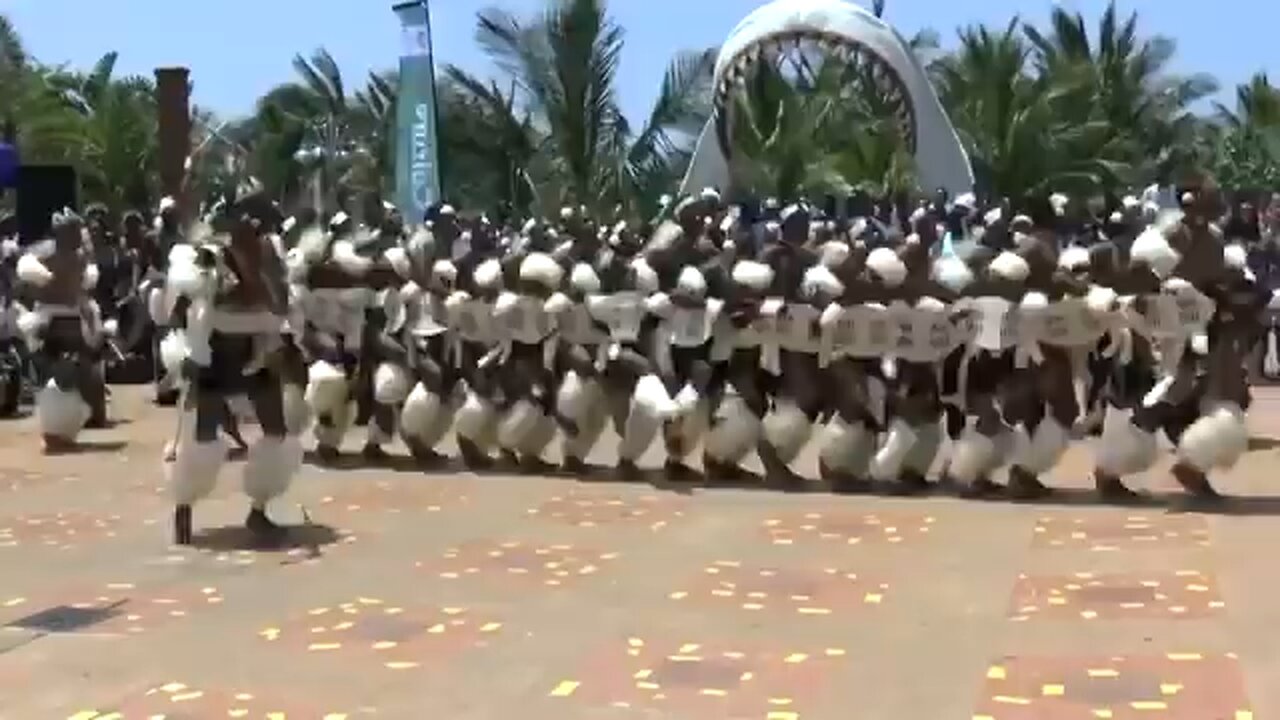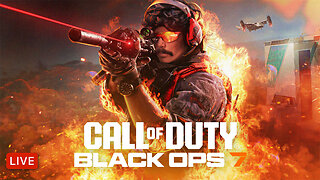Premium Only Content

Mind bowing African Dance
African dance is a diverse and vibrant art form rooted in the continent’s rich cultural heritage, encompassing thousands of ethnic groups and traditions. It’s not just movement—it’s storytelling, spiritual expression, and communal bonding, often tied to rituals, celebrations, or daily life. Here’s a concise overview based on your query:
Key Characteristics
• Diversity: Styles vary widely across regions (e.g., West, East, Southern, Central Africa). Examples include the energetic Kpanlogo (Ghana), the graceful Makosa (Cameroon), or the powerful Gumboot (South Africa).
• Rhythm-Driven: Movements sync closely with polyrhythmic drumming, percussion, or vocal chants, emphasizing grounded steps, torso articulation, and improvisation.
• Communal: Often performed in groups, dances reinforce social ties, mark rites of passage (birth, marriage, death), or honor ancestors.
• Symbolism: Gestures and patterns carry meaning, like mimicking animals, farming, or spiritual forces.
Notable Styles
1 West Africa:
◦ Sabar (Senegal): Fast-paced, with high kicks and acrobatics, often at weddings.
◦ Djembe Dance (Mali/Guinea): Explosive moves paired with djembe drum rhythms.
2 Southern Africa:
◦ Indlamu (South Africa): Zulu warrior dance with precise footwork and mock combat.
◦ Gumboot: Miners’ dance using boots as percussion, born in oppressive work conditions.
3 Central/East Africa:
◦ Bikutsi (Cameroon): Lively, hip-shaking dance tied to pop music.
◦ Maasai Jumping Dance (Kenya/Tanzania): Vertical leaps to showcase strength.
Cultural Significance
• Spiritual Connection: Many dances invoke ancestors or deities, like the Yoruba Bata (Nigeria) for Orisha worship.
• Social Commentary: Dances like South Africa’s Pantsula reflect urban struggles and resistance.
• Modern Influence: African dance shapes global styles (e.g., hip-hop, Afrobeat) via diaspora and artists like Beyoncé incorporating moves in performances.
Learning/Experiencing
• Classes: Available globally, often focusing on West African styles due to their accessibility. Check local studios or online platforms like Steezy for tutorials.
• Festivals: Events like FESPAD (Pan-African Dance Festival, Rwanda) showcase authentic performances.
• Respectful Engagement: Learn about the dance’s origins to avoid cultural appropriation.
If you’re looking for something specific—like a particular style, how to learn, or its influence—let me know, and I can dig deeper or even analyze related content (e.g., videos, posts) if you provide them!
#africandance
-
 23:51
23:51
Stephen Gardner
2 hours ago🚨Trump did the UNTHINKABLE!
16.5K76 -
 2:54:14
2:54:14
Barry Cunningham
6 hours agoBREAKING NEWS: PRESIDENT TRUMP SAYS HE MAY INVOKE THE INSURRECTION ACT! AND NOW WE KNOW WHY!
25.6K14 -
 40:13
40:13
Clownfish TV
11 hours agoMagic the Gathering Champion BANNED from Tournament Over MAGA Hat?! | Clownfish TV
9.36K19 -
 2:49:47
2:49:47
TimcastIRL
4 hours agoTrump Considers Invoking INSURRECTION ACT To Deploy National Guard to Portland | Timcast IRL
157K81 -
 10:05:38
10:05:38
Dr Disrespect
12 hours ago🔴LIVE - DR DISRESPECT - BLACK OPS 7 - GIVE ME BACK MY NUKE
130K16 -
 LIVE
LIVE
Drew Hernandez
3 hours agoTARGETED LEFTIST TERRORIST ATTACK IN CHICAGO & ISRAEL GEOFENCING U.S. MEGA CHURCHES
1,016 watching -
 8:58
8:58
Degenerate Jay
13 hours agoXbox Game Pass Is Getting Ridiculous
9.48K1 -
 7:03
7:03
GBGunsRumble
1 day agoGBGuns Range Report 05OCT25
5.99K2 -
 1:32:30
1:32:30
Glenn Greenwald
10 hours agoWill the War in Gaza Finally End? Flotilla Activists Predictably Abused in Israel's Dungeons; Van Jones' Revealing Joke about "Dead Gazan Babies" | SYSTEM UPDATE #527
90K66 -
 LIVE
LIVE
SpartakusLIVE
5 hours ago#1 King of Content brings MOTIVATION to the MASSES on Monday
451 watching
